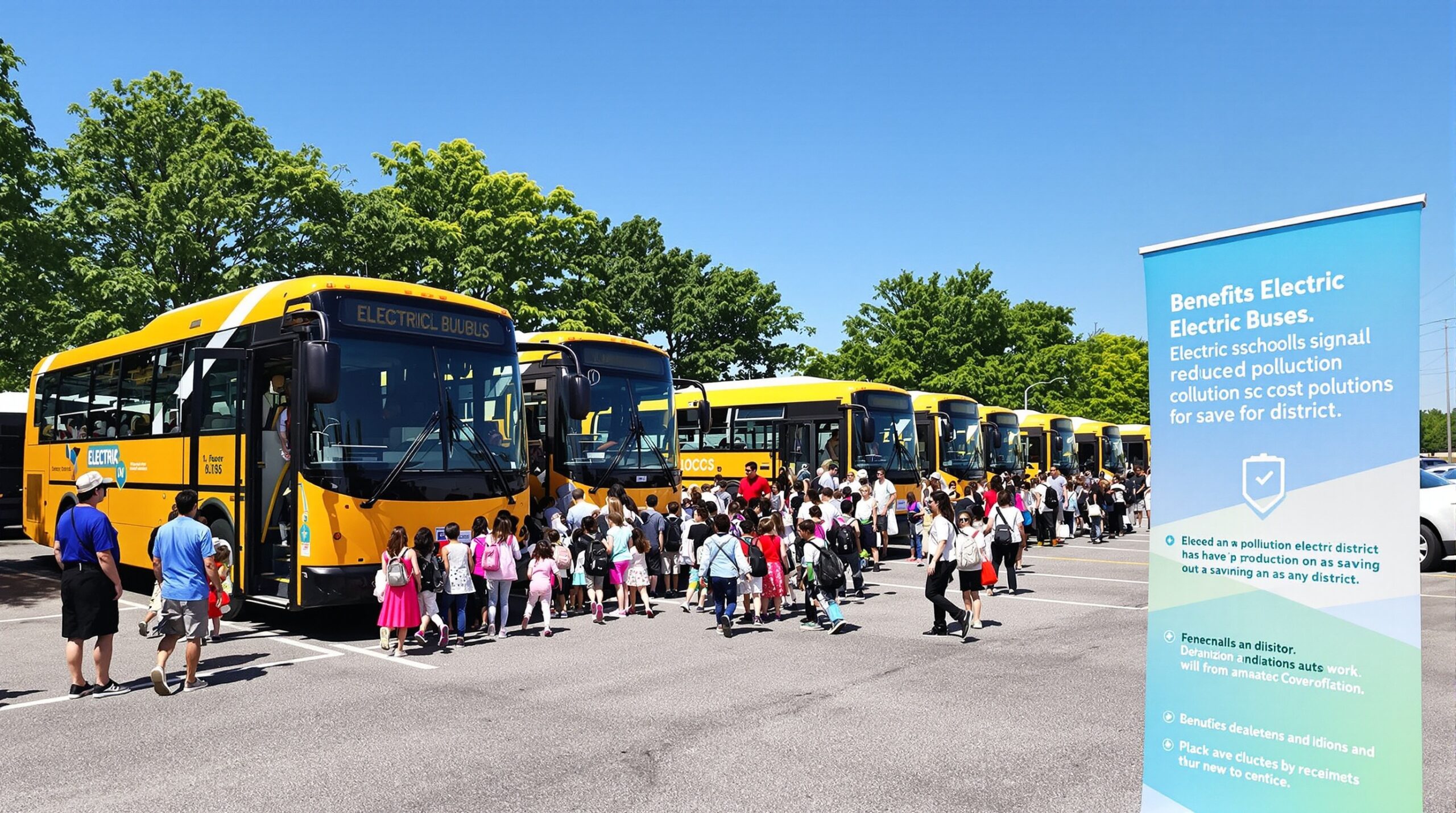Across the United States, school districts are shifting from traditional diesel-powered school buses to electric models. This transition brings significant health, economic, and environmental benefits. As more districts electrify their fleets, communities experience direct changes to air quality and operational budgets.
The Problem with Diesel School Buses
Diesel school buses have long dominated American roads, transporting millions of children daily. Unfortunately, these vehicles emit harmful pollutants such as nitrogen oxides and particulate matter. Exposure to these toxins has been linked to respiratory issues, allergies, and worsening asthma in children. Diesel exhaust also contributes to smog and can harm neighborhood air quality, particularly in low-income communities.
The school transportation sector burns hundreds of millions of gallons of diesel fuel each year. This reliance leads to high carbon dioxide emissions, which contribute to climate change. For district administrators and parents, these outcomes raise ongoing concerns about children’s health and the community’s environmental footprint.
How Electric Buses Improve Air Quality
Electric school buses produce no tailpipe emissions, directly reducing students’ exposure to harmful fumes during pickups and drop-offs. Without internal combustion engines, electric models help keep the air clear around schools, neighborhoods, and bus depots. The U.S. Environmental Protection Agency (EPA) estimates that electric buses can eliminate roughly 54,000 pounds of greenhouse gas emissions per year per vehicle compared to diesel models.
Cleaner air supports better respiratory health for students, drivers, and the surrounding community. For children with asthma or other breathing issues, fewer pollutants near school zones can mean fewer medical visits and missed school days. As bus routes routinely pass through residential streets, the benefits ripple outward, improving the lives of everyone along the way.
Financial Benefits: Operating and Maintenance Costs
Although electric school buses cost more upfront than diesel models, districts see significant savings over time. Electric motors are simpler, with fewer moving parts that require maintenance or replacement. This can result in maintenance costs up to 60% lower than those required for diesel buses.
Electric vehicles (EVs) charge from the electric grid, so fuel costs are dramatically reduced. Electricity tends to be more cost-stable than diesel fuel, and many districts schedule charging during off-peak hours to save even more. According to a 2022 study by the U.S. Department of Energy, a typical district can save up to $6,000 in fuel costs per bus each year compared to diesel. These savings accumulate quickly across entire fleets.
With lower maintenance and fuel costs, the total cost of ownership for electric buses can be lower than diesel options after only a few years. This financial advantage encourages school districts to tap federal and state funding programs to cover higher purchase prices.
Federal and State Incentives Accelerate Adoption
To help schools transition, the federal government introduced significant funding for electric school buses. The Bipartisan Infrastructure Law allocated $5 billion over five years to help districts purchase low- or zero-emission school buses. In addition, states like California, New York, and Maryland provide grants and rebates to supplement bus purchases and charging infrastructure.
These incentives make it financially feasible for districts of all sizes to join the electric transformation. Funding often covers up to 90% of the cost for new electric buses, offsetting the gap between traditional and electric vehicles. Community engagement and private partnerships can further ease the transition, offering support for training, workforce development, and technical planning.
Pilot Programs and Early Successes
Many school districts have launched successful pilot programs to demonstrate the electric buses’ effectiveness and reliability. Montgomery County in Maryland operates the nation’s largest fleet of electric school buses, serving over 160,000 students. Initial reports highlight improved reliability, lower running costs, and strong driver satisfaction compared to previous diesel models.
In California, the Twin Rivers Unified School District has replaced dozens of diesel buses with fully electric models over the past five years. The district recorded quieter rides and near-zero local emissions, giving bus drivers, parents, and local leaders confidence in investing further. As more pilots succeed, neighboring regions and states take notice and seek to expand their programs.
Challenges and Solutions for Electrifying Fleets
Despite the benefits, electrifying entire bus fleets presents logistical hurdles. Upfront costs remain higher, requiring creative financing and planning. Charging infrastructure must be installed at bus depots or schools, and grid capacity may need upgrades to meet the increased demand.
Operational adjustments are also needed, such as scheduling buses for mid-day charging or adapting routes to fit current battery ranges. Electric buses typically travel 100 to 150 miles per charge, which covers most daily routes but can challenge rural or extra-long assignments. Newer models are arriving with longer battery life and faster charging options, helping to address these issues.
Through careful planning and partnerships with utilities, districts are finding solutions. Training for mechanics, drivers, and staff ensures smooth transitions. Manufacturers and infrastructure providers are increasing support, helping districts access maintenance, training, and technical advice as they electrify.
Looking Ahead: The Future of School Transportation
The shift to electric school buses signals a larger move toward sustainable, community-focused transportation in the education sector. As battery technology improves and costs decrease, electric buses will become the default choice for more regions nationwide. With governments, utility companies, and community organizations investing further, the pace of transition is expected to accelerate over the next decade.
Students riding electric buses today benefit now and set examples for their peers and families. Cleaner air, quieter commutes, and safer routes enhance their daily experiences. As districts replace diesel fleets, they offer a healthier and more responsible path forward.
Conclusion
Electric school buses offer a compelling alternative to diesel-powered models by cutting air pollution, reducing greenhouse gas emissions, and lowering long-term costs. School districts nationwide are racing to adopt these advancements, supported by government incentives and strong public interest. Through ongoing innovation and collaboration, electric buses will define the future of student transportation while delivering cleaner, healthier air for all.

